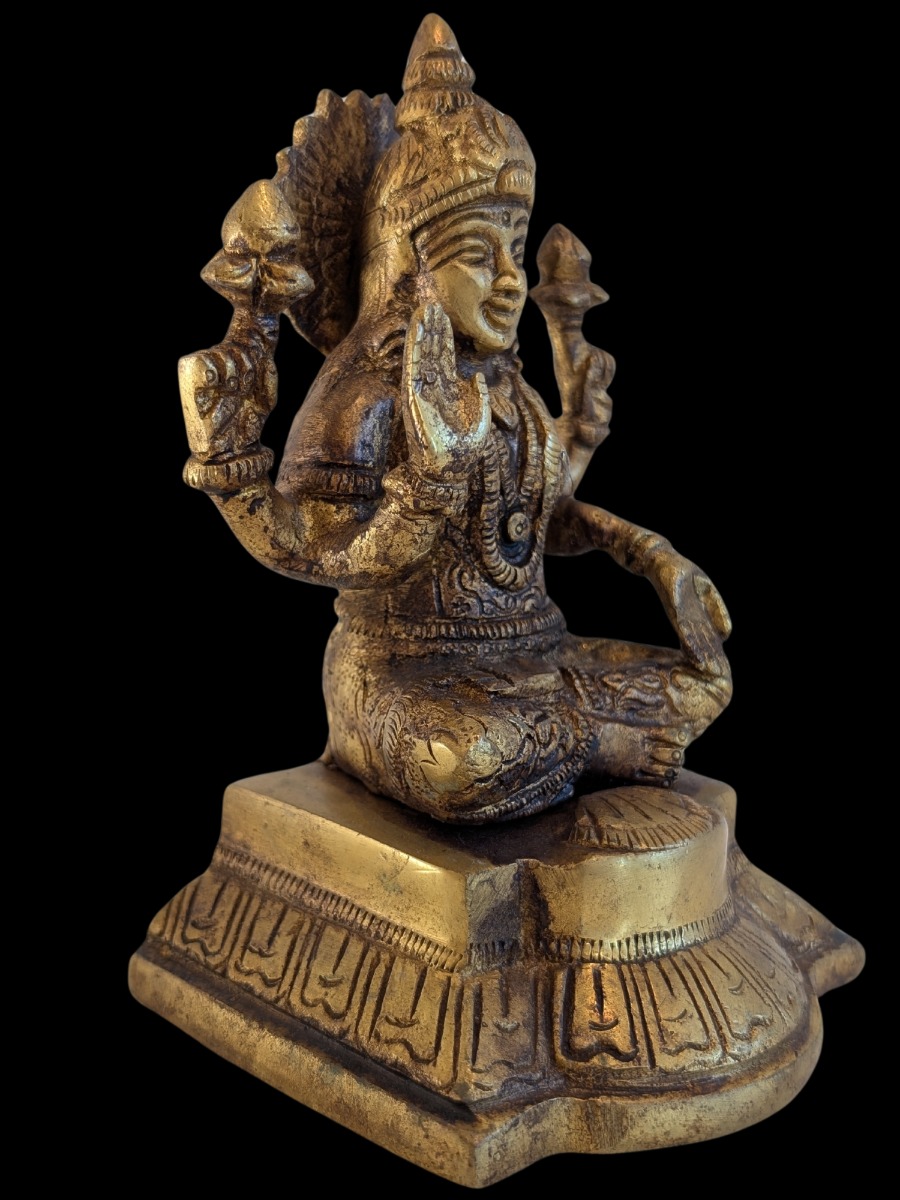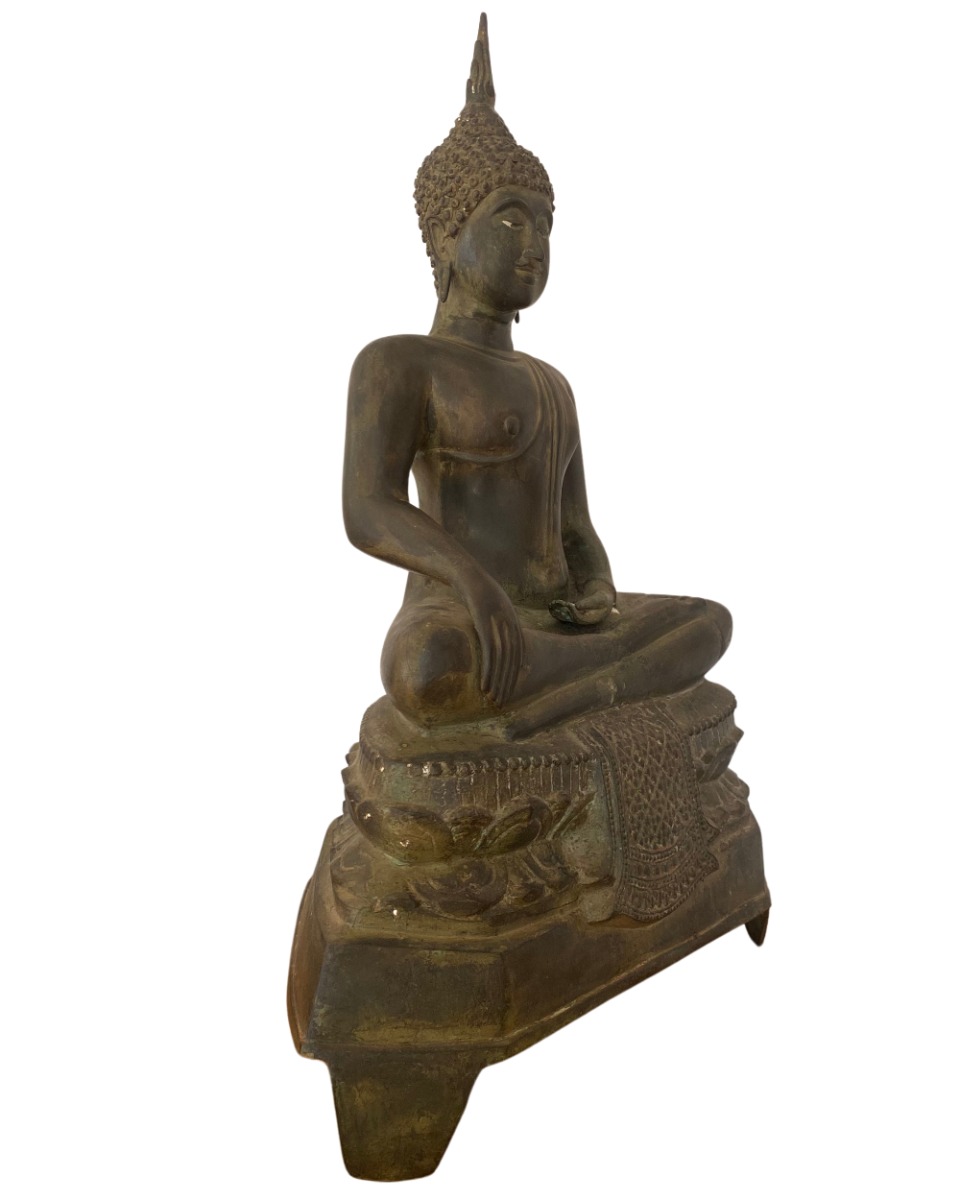The Story of Early Buddha Statues and the Thai Buddha Statue Tradition

For centuries, Buddha was not represented in human form. In the earliest stages of Buddhist art—especially during the time immediately after the Buddha’s passing (around the 5th–4th century BCE)—artists used symbols such as the Bodhi tree, an empty throne, footprints, or the Dharma wheel to represent his presence and teachings. It wasn’t until several hundred years later that early Buddha statues emerged, marking a significant shift in religious art and cultural expression.
The Emergence of Early Buddha Statues
The earliest known Buddha statues appeared around the 1st century CE, influenced by two major artistic traditions: the Gandhara style in present-day Pakistan and Afghanistan, and the Mathura style in northern India.
Gandhara Style: Strongly influenced by Greco-Roman art due to Alexander the Great’s legacy, Gandhara statues featured realistic human proportions, wavy hair, and robes that resembled the togas of classical antiquity. This blend of East and West produced a serene yet distinctly human Buddha figure.
Mathura Style: Rooted in Indian artistic traditions, Mathura statues were more stylized, with softer facial features, broad shoulders, and lighter, almost transparent robes. The Buddha here was depicted as a spiritual yet approachable teacher, radiating warmth and compassion.
These early depictions were not merely ornamental. They were meant to convey the essence of enlightenment, compassion, and inner peace, inspiring devotees in their meditation and practice.
Spread of the Buddha Statue Tradition Across Asia
As Buddhism spread across Asia—via the Silk Road, maritime trade routes, and cultural exchanges—the art of Buddha statues evolved in response to local traditions, beliefs, and materials. In China, early Buddha statues adopted features like elongated ears, symbolic mudras (hand gestures), and more elaborate robes. In Japan, the statues leaned toward a refined, minimalist elegance, reflecting Zen influence.
When Buddhism reached Southeast Asia, including Thailand, artists merged Indian influences with local aesthetics, giving rise to a distinctive style: the Thai Buddha statue.
The Thai Buddha Statue: Unique Characteristics
The Thai Buddha statue tradition emerged around the 13th century during the Sukhothai period, but its roots were nourished by centuries of Buddhist art evolution. While early Thai statues were influenced by Indian and Khmer forms, Thai artisans eventually developed a style all their own.
Distinctive features of the Thai Buddha statue include:
Flame-like Halo (Usnisa Flame) – A pointed flame rising from the top of the Buddha’s head, symbolizing spiritual radiance and enlightenment.
Graceful, Elongated Form – Thai Buddhas often have slender bodies and delicate features, emphasizing serenity and elegance.
Sukhothai Walking Buddha – A unique depiction found almost exclusively in Thailand, where the Buddha is shown walking, one foot slightly lifted, symbolizing movement and the spread of compassion.
Smooth, Serene Expression – The face is calm and symmetrical, the eyes half-closed in meditation, radiating inner peace.
Symbolism in Thai Buddha Statues
Every element of a Thai Buddha statue carries meaning:
Posture (Mudra) – A seated Buddha with the right hand touching the earth represents the moment of enlightenment; a reclining Buddha depicts his final nirvana; a standing Buddha may symbolize protection or teaching.
Facial Expression – The gentle smile is not one of amusement but of deep compassion and equanimity.
Clothing – The robe’s folds and texture may reflect regional preferences and historical periods, but always hint at simplicity and detachment from materialism.
From Early Buddha Statues to Modern Worship
The journey from the early Buddha statues of Gandhara and Mathura to the refined Thai Buddha statue tradition reflects not just artistic evolution but also the adaptability of Buddhism across cultures. While the earliest statues aimed to make the Buddha’s image more relatable to devotees, later statues, including those in Thailand, sought to express not just a likeness but the very spiritual qualities he embodied.
In modern Thailand, Buddha statues are central to temples, homes, and public spaces. Devotees offer flowers, incense, and prayers before them—not to worship the statue itself, but to honor the enlightened qualities it represents. Statues are also crafted in various sizes, from monumental golden figures like the Great Buddha of Wat Muang to tiny amulets carried for protection and blessing.
Preservation and Cultural Heritage
Both early Buddha statues and Thai Buddha statues are treasured not only as religious icons but also as cultural heritage. Museums around the world house ancient Gandhara and Mathura Buddhas, while Thailand carefully preserves its historical pieces in temples and cultural institutions.
The challenge today lies in balancing preservation with accessibility—ensuring that these statues remain sources of inspiration for future generations while protecting them from the wear of time and the risks of illicit trade.
Conclusion
The early Buddha statues marked a turning point in Buddhist art, giving a human face to an enlightened teacher whose presence had been represented only in symbols for centuries. As this artistic tradition traveled and transformed, it found unique expression in the Thai Buddha statue, where elegance, symbolism, and spiritual depth came together in perfect harmony.
Whether viewed as sacred art, cultural treasure, or a source of personal inspiration, Buddha statues—ancient and modern—continue to serve as a reminder of compassion, mindfulness, and the possibility of awakening in our own lives.
If you’d like, I can also create a search-friendly blog title and meta description so this ranks well for your keywords. That would make it more SEO-ready. Would you like me to do that now?





